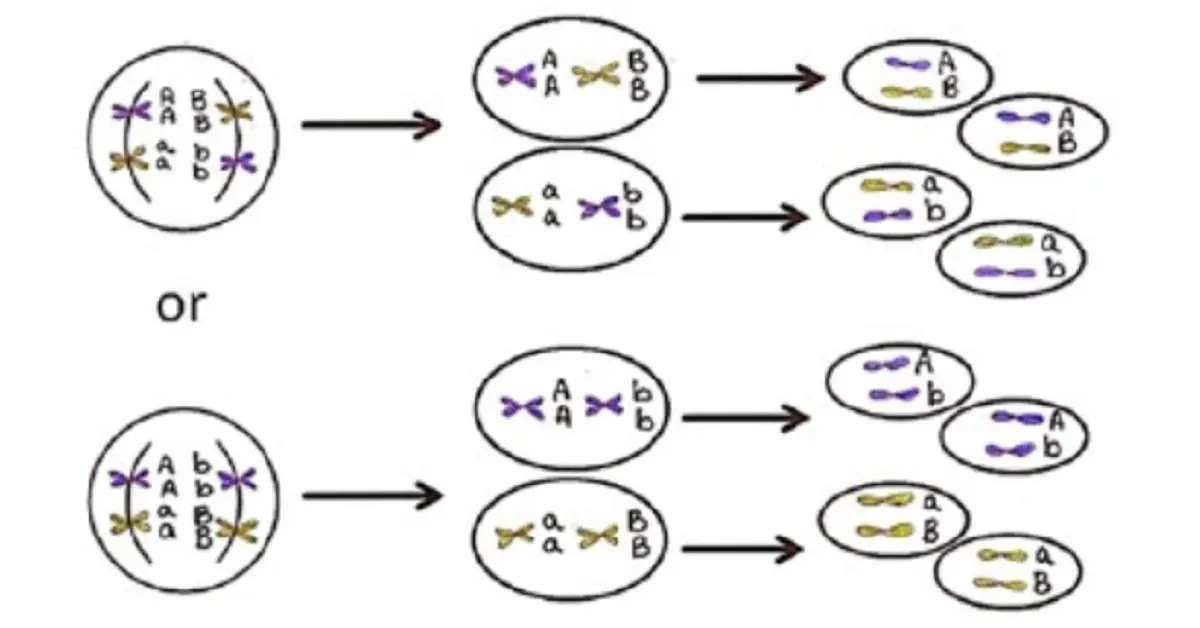1. Introduction to Genetic Recombination
Genetic recombination is a biological process that plays a pivotal role in exchanging genetic material between different organisms, contributing to genetic diversity. Recombination occurs during the formation of gametes and is crucial for the evolution of species. It is a natural process that reshuffles genetic material to create variation within a population, making it an essential aspect of life on Earth.
The importance of which method of genetic recombination is illustrated in the diagram? cannot be overstated. It promotes evolutionary change and is a driving force behind species adaptability. Without it, organisms would be unable to adapt efficiently to environmental changes, impacting survival rates and overall biodiversity.
2. Overview of Genetic Recombination Types
There are three major types of which method of genetic recombination is illustrated in the diagram?: homologous recombination, non-homologous recombination, and site-specific recombination. Each method plays a distinct role in the rearrangement of genetic material.
- Homologous recombination is a mechanism where sequences of DNA that are very similar exchange genetic information.
- Non-homologous recombination involves the joining of DNA strands that are not similar.
- Site-specific recombination occurs at particular sequences within the DNA and involves specific enzymes that facilitate the exchange.
3. Homologous Recombination Explained
Homologous recombination is the most well-known method of which method of genetic recombination is illustrated in the diagram?. This process takes place between DNA sequences that are nearly identical. It occurs frequently during meiosis, the process that produces gametes, and plays a critical role in the repair of double-strand breaks in DNA.
The enzymes involved in homologous recombination include recombinase proteins, such as Rad51 in eukaryotes, which facilitate the pairing and exchange of DNA strands. Homologous recombination increases genetic diversity and ensures proper chromosome segregation during meiosis.
4. Non-Homologous Recombination Explained
Unlike homologous recombination, non-homologous recombination occurs between dissimilar DNA sequences. This process is less precise but serves an essential role in certain biological functions, such as the development of the immune system. It is mediated by different enzymes and is crucial for DNA repair and the evolution of immune responses.
Non-homologous recombination can introduce genetic changes that drive evolution but can also lead to mutations, some of which may result in disease.
5. Site-Specific Recombination
Site-specific recombination involves DNA exchanges at specific sequences within the genome. This process is highly targeted and facilitated by specific enzymes called recombinases. These enzymes recognize and act upon certain DNA sequences, allowing for controlled genetic changes.
Site-specific recombination is used in both natural processes, such as the integration of viral DNA into host genomes, and artificial applications like genetic engineering.
6. Genetic Recombination in Prokaryotes
In prokaryotes, genetic recombination happens through three main mechanisms: transformation, transduction, and conjugation.
- Transformation is the uptake of naked DNA from the environment by a bacterial cell.
- Transduction involves the transfer of DNA from one bacterium to another via a virus.
- Conjugation is the direct transfer of DNA between bacteria through a specialized structure known as the pilus.
7. Genetic Recombination in Eukaryotes
In eukaryotes, which method of genetic recombination is illustrated in the diagram? is most commonly associated with sexual reproduction and meiosis. During meiosis, homologous chromosomes exchange genetic material in a process called crossing over. This creates new combinations of genes, which are then passed on to offspring, contributing to genetic diversity.
Crossing over plays a significant role in evolution and the survival of species, allowing organisms to adapt to changing environments.
8. Visualizing Genetic Recombination
Genetic recombination is often visualized in diagrams to simplify understanding of complex processes. Diagrams usually depict the exchange of genetic material, the involvement of enzymes, and the resulting combinations of DNA.
9. The Diagram in Focus: Analyzing Which Method is Illustrated
When interpreting genetic recombination diagrams, it is essential to look for specific markers. In this case, the diagram likely illustrates homologous recombination due to the presence of similar DNA sequences exchanging genetic material. The involvement of enzymes such as recombinase would further support this identification.
10. Genetic Recombination in Disease
While recombination is a natural and beneficial process, errors during recombination can lead to genetic mutations. These mutations may cause diseases such as cancer, where genetic material is rearranged in harmful ways.
11. Applications of Genetic Recombination
In biotechnology, genetic recombination is harnessed for gene therapy, agriculture, and other fields. Scientists use recombination to create genetically modified organisms (GMOs) with desired traits, such as disease resistance or improved crop yield.
12. Genetic Recombination in Evolution
Recombination accelerates evolution by creating genetic diversity. This diversity enables natural selection to act on a population, increasing the chances of survival in changing environments.
13. Tools for Studying Genetic Recombination
Laboratory techniques, such as CRISPR, allow scientists to manipulate recombination events, furthering research in genetics and disease.
14. Common Misconceptions About Genetic Recombination
There are several misconceptions about which method of genetic recombination is illustrated in the diagram?. One of the most common is the belief that it always leads to beneficial outcomes. However, while recombination can enhance genetic diversity, it can also result in harmful mutations.
15. Conclusion
Which method of genetic recombination is illustrated in the diagram? is a fundamental biological process that drives evolution, diversity, and adaptation. Understanding the mechanisms and applications of recombination is crucial for advancements in fields like genetics, medicine, and biotechnology
